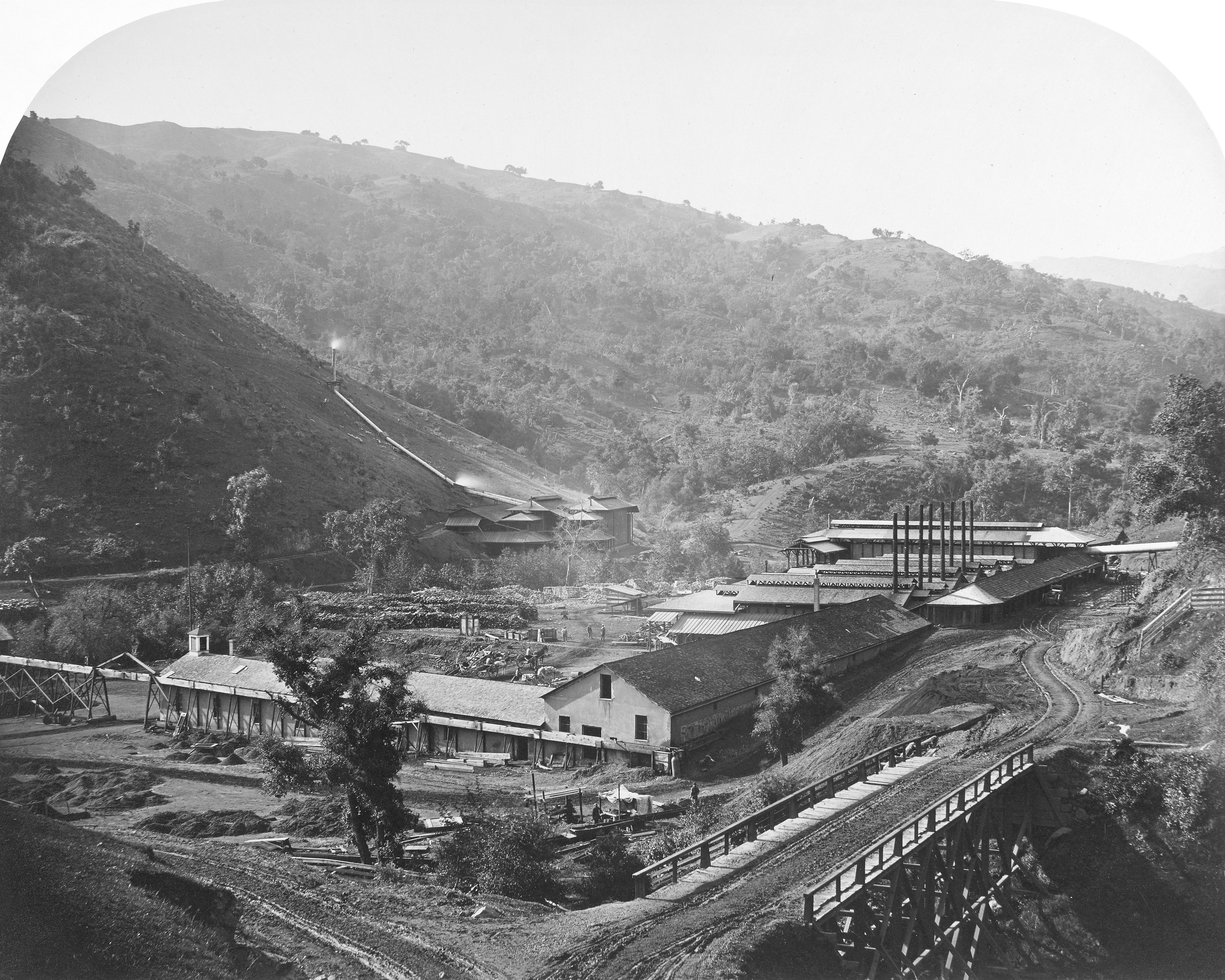"Hydraulic Mining, Behind the Pipes."
Several months ago I purchased a copy of Isenberg, Andrew. 2006. Mining California: An Ecological History (New York: Hill & Wang, ISBN 0-8090-6932-6) at a used book sale. I have an ongoing if rarely pursued interest in the history of the far western US and in mining as a part of that history. Over the past few very hot days, stuck at home waiting for plumbers, I have been reading the fine and fascinating book. The early history of California is intimately tied to mining, and more than 100 years after the last hydraulic mines closed, scars remain on the landscapes of the Sierra Nevada foothills in "Gold Rush Country." Hydraulic mining techniques were widely used after about 1855, as water at high pressure was sent through nozzles pointed at loose sediments known or expected to contain gold nodules. The resulting mud was then run through screens and placers which separated out the valueless sand and gravel and left behind much of the heavier gold and other valuable minerals. (Not all of the gold was recovered, and there is a small but thriving present day business reprocessing the sand and gravel to recover the precious metals early mining left behind in deposits of sand and gravel like the one shown in th photo at the end of this posting).
In order to feed the high pressure nozzles, a great deal of water was needed, and to assure pressures high enough to wash the loose sediments into sluices, dams and aqueducts were built higher up on the streams. Not a few of those dams were poorly engineered or shoddily constructed, and there were several catastrophic dam breaks flooding downstream areas and killing miners unlucky enough to be in the path of the water flowing downhill. Vast quantities of materials were displaced by the technique, and among several consequences rivers once running clear were turned into thin mud flows. Salmon runs in those rivers ended, and San Francisco Bay received large quantities of silt. The already flood prone Sacramento and San Joaquin Rivers, near sea level in their final kilometers where they meet in the delta, flooded more often and more catastrophically. Closer to the mines, towns had to find alternate water sources as the water was too muddy and contained toxic metals dissolved at and downstream from the workings. Hydraulic mining was finally banned in 1884 by a decision of the federal 9th Circuit Court.
Traces of mining history remain in the water supply of those streams where water melted from the Sierra Nevada snowpack and flowing through the rivers of the gold region was used in hydraulic mining and today is the water supply for much of California's 37 million people, its industry, and its agriculture. Gold and other precious metals were the magnets attracting miners to the state, but California was also one of the world's major producers of mercury, chemical symbol Hg, at the New Almaden mine in the Coast Range mountains near present day San José in Santa Clara County and at New Idria in San Benito County about 100 km south. Mercury in most of its common forms is toxic to humans, domestic animals, and much plant life, and in some forms only a small exposure to mercury is needed to have toxic effect.
New Almaden Smelting Works, 1863
Source: Wikipedia
The proximity of the mercury source, it is less than 500 km between the New Almaden mine and most of the gold workings in the Sierra foothills, made an amalgamation process of mining popular. Gold (as well as silver and several other valuable metals) will dissolve in mercury. Once a quantity of ore is dissolved in a flask of mercury, distillation drives off the mercury, which can then be condensed and reused, leaving behind the desired gold. While the mercury fumes were highly toxic to anyone who happened to breathe them during the distillation, the process was inexpensive and thus popular. It was far from perfect, and lumps of mercury contaminated material were deposited in the detritus of hydraulic (and other) mines. Over time some of that mercury has leeched into the flowing waters of streams and contaminates nearby rivers. Occasionally health authorities ban use of the water for domestic purposes because of mercury contamination. In California with perennial water supply problems, mercury contamination of some of its more reliable streams remains a serious and ongoing problem.
Cone of hydraulic tailings on Wedge Gulch, The tailings were partly caught by a restraining dam, and the mass afterward eroded when the dam gave out. Big Trees quadrangle, Calaveras County, California. 1905. Published as plate 5-A in U.S. Geological Survey. Professional paper 105, 1917.



